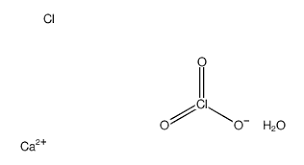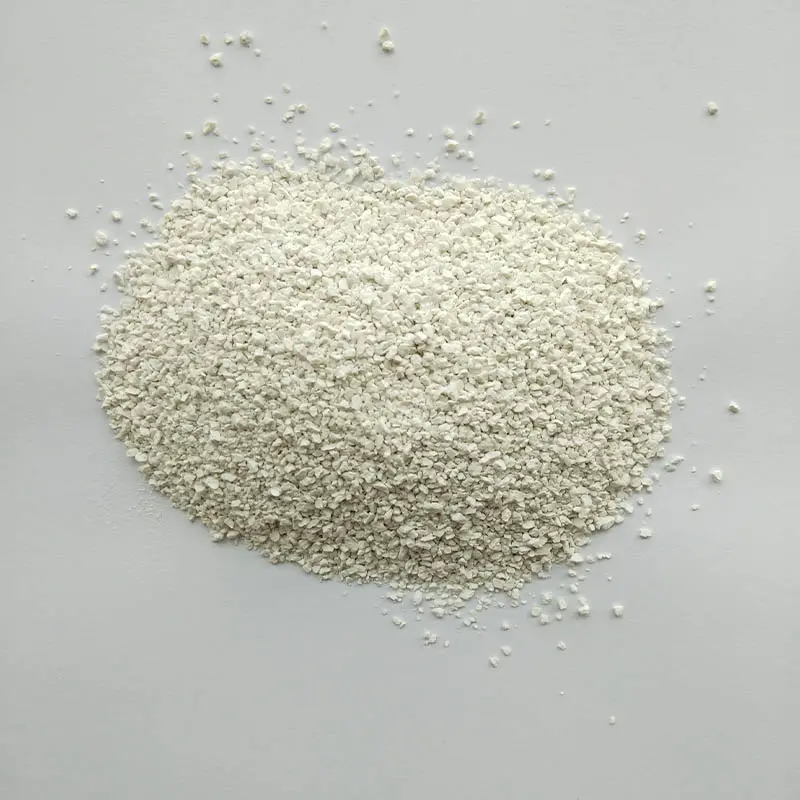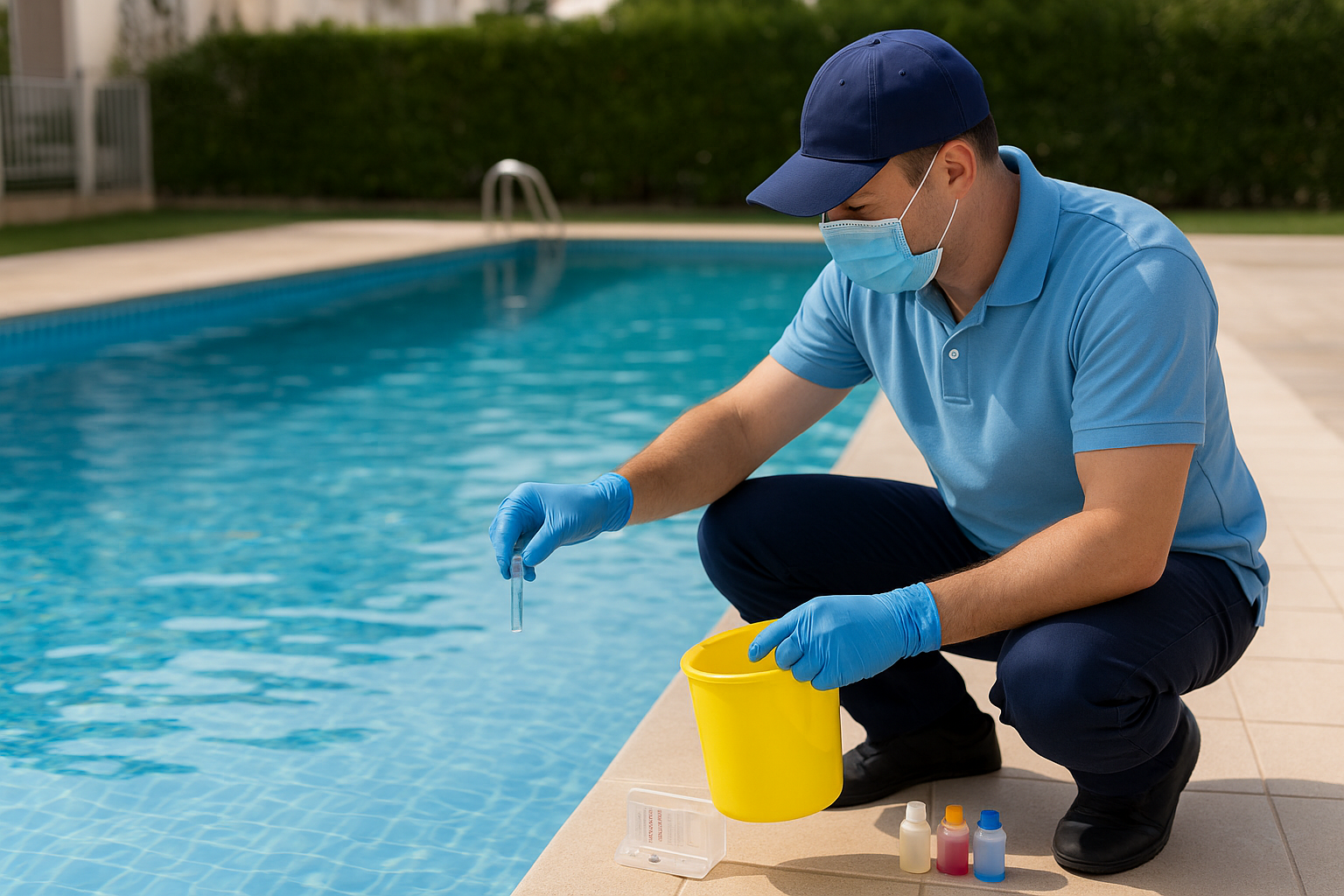Calcium Hypochlorite, commonly known as Cal Hypo, is one of the most widely used pool chemicals and water disinfectants. It provides a powerful solution for maintaining safe, clean and hygienic water quality in swimming pools, spas and industrial water treatment systems.
With proper treatment and use, Cal Hypo can effectively control bacteria, algae and other pollutants, ensuring clear water quality. This guide will explore safety measures and practical tips for using calcium hypochlorite in swimming pools.
What is Calcium Hypochlorite?
Calcium hypochlorite is a strong oxidant with the chemical formula Ca(ClO)₂. It comes in various forms such as granules, tablets and powders, which can meet different water treatment needs. Calcium hypochlorite is renowned for its high chlorine content (typically 65-70%) and rapid disinfection ability. Its strong oxidizing property can destroy organic matter and pathogenic microorganisms, maintaining the hygienic water quality for human use.


The main characteristics of Calcium Hypochlorite
- High chlorine concentration, rapid disinfection
- Effectively combat bacteria, viruses and algae
- Suitable for swimming pools and industrial water treatment
- There are various forms: granules, tablets and powders
The Application of Calcium Hypochlorite in swimming pools
Calcium hypochlorite is one of the most commonly used pool chemicals due to its high chlorine content and fast-acting disinfection properties. Its main function is to maintain the safety, cleanliness and algae-free quality of the swimming pool water. The following are its main applications:
How to use Calcium Hypochlorite in a swimming pool
Correct use can ensure the maximum effectiveness and safety. Please follow the steps below carefully
1. Test the water quality before use
Before adding Cal Hypo, be sure to measure:
Free chlorine
pH value (ideal range: 7.2-7.6)
Total alkalinity (ideal range: 80-120 ppm)
Use a pool test kit or digital tester to ensure accurate readings. Correct testing can prevent excessive chlorination and chemical imbalance.
2. Pre-dissolved particles
Before adding calcium hypochlorite to the swimming pool, it is essential to dissolve it in a bucket of water first.
Never pour dry particles directly into the swimming pool. Direct contact with the pool surface may cause bleaching or damage.
3. Add to the pool
Slowly pour the pre-dissolved supernatant around the swimming pool, preferably close to the backwater nozzle, to ensure even distribution.
Avoid pouring near swimmers or on fragile pool surfaces.
4. Cycle
After adding Cal Hypo, run the pool pump to ensure uniform chlorine distribution.
Retest the chlorine and pH values and make adjustments as needed.

For daily maintenance: 1-3 ppm free chlorine.
For superchlorination (shock) : 10-20 ppm of free chlorine, depending on the size of the swimming pool and the degree of pollution.
Use Cal Hypo granules dissolved in water; The dosage may vary depending on the chlorine content (usually 65-70%).
Recommended dosage of Calcium Hypochlorite
The specific dosage depends on the swimming pool capacity, the chlorine content of the product and the water quality conditions. The following table provides general guidance for residential and commercial swimming pools:
|
Pool Volume |
Purpose |
Dosage of 65% Cal Hypo Granules |
Notes |
| 10,000 liters (10 m³) | Regular maintenance | 15–20 g | Maintains 1–3 ppm free chlorine |
| 10,000 liters | Weekly shock | 150–200 g | Raises chlorine to 10–20 ppm |
| 50,000 liters (50 m³) | Regular maintenance | 75–100 g | Adjust for free chlorine 1–3 ppm |
| 50,000 liters | Shock / algae treatment | 750–1000 g | Apply after heavy usage or algae outbreaks |
Accurate dosing techniques for Calcium Hypochlorite
- Be sure to calculate based on the actual capacity of the swimming pool.
- Adjust the dosage based on factors such as sunlight exposure, swimmer load and water temperature, as these factors can affect the consumption of chlorine.
- Avoid adding it simultaneously with other chemicals, especially acidic substances, to prevent dangerous reactions.
Safety tips for using the swimming pool
When adding chemicals, please ensure good ventilation in the swimming pool area.
Avoid swimming immediately after Shock. Wait until the chlorine content recovers to 1-3 ppm before swimming.
Store the remaining Cal Hypo in a dry, cool and well-ventilated place, away from sunlight and organic matter.
Train swimming pool staff or maintenance personnel on the correct handling and emergency procedures.
The industrial and municipal water treatment applications of Calcium Hypochlorite
The application scope of calcium hypochlorite is far beyond swimming pools. In industrial and municipal water treatment, it plays a crucial role in disinfecting large amounts of water sources and ensuring compliance.
The main applications include:
- Drinking water treatment: Cal Hypo effectively kills harmful bacteria and viruses, ensuring the safety of drinking water.
- Wastewater treatment: Used to reduce pathogens before discharge or reuse, in compliance with environmental standards.
- Cooling towers and process water: Prevent the formation of biofilms and microbial contamination in industrial systems.
The names and uses of Calcium Hypochlorite in different markets
Calcium hypochlorite is widely regarded as one of the most effective and stable solid chlorine-based disinfectants. However, its name, dosage form, and application preferences vary in different markets around the world. Understanding these differences helps distributors and importers better adapt to local demands and regulations.
1. North America (the United States, Canada, Mexico)
Common names: "Calcium Hypochlorite," "Cal Hypo," or simply "Pool Shock"
Typical forms: Granules and tablets (65% - 70% available chlorine).
Main uses
Disinfection of residential and public swimming pools
Chlorination treatment of drinking water in small-scale municipal systems
Emergency disinfection for disaster relief and rural water supply
Market description: The United States Environmental Protection Agency (EPA) strictly regulates labels and safety data, emphasizing safe handling and storage.
2. Europe (EU countries, UK)
Common names: "Calcium Hypochlorite," "Chlorine Granules," or "Cal Hypo Tablets."
Typical forms: powder, granules, or 200-gram tablets.
Main uses
Swimming pool disinfection, especially for commercial and hotel swimming pools
Disinfection of water in the spa pool and hot tub
Industrial water treatment (cooling towers and food processing plants)
Market description: European buyers are concerned about calcium hypochlorite that complies with REACH and BPR certifications, giving priority to product purity, packaging safety, and environmental labels.
3. Latin America (Brazil, Argentina, Chile, Colombia, etc.)
Common names: “Hipoclorito de Calcio”, “Cloro Granulado” o “Cloro en Polvo”.”
Typical form: Granules or powder in 45-kilogram drums or 20-kilogram drums.
Main uses
Disinfection of public and residential swimming pools
Purification of rural drinking water
Agricultural disinfection (such as cleaning equipment and animal enclosures)
Market Note: The market strongly favors high-chlorine granules (≥70%) and durable packaging to cope with humid climates.
4. Africa and the Middle East
Common names: "Calcium Hypochlorite," "Chlorine Powder," "Bleaching Powder," or "Pool Chlorine."
Typical forms: Granules, powders, or tablets.
Main uses
Disinfection of drinking water in urban and rural areas
Chlorination of the swimming pool
Family and hospital hygiene
Market Note: Cal Hypo is widely used in government water treatment projects and is usually supplied in large barrels (40-50 kilograms) for bulk use.
5. Asia-Pacific Region (India, Southeast Asia, Australia)
Common Names: “Calcium Hypochlorite,”“Cal Hypo,” or “Chlorine Granules.”
Typical forms: Granules, tablets
Main uses
Disinfection of the swimming pool and spa
Pond disinfection and disease control in aquaculture.
Industrial wastewater and cooling water treatment
Cleaning (equipment hygiene) in the food and beverage industry
Market Note: In countries such as India and Indonesia, Cal Hypo is also used in textile bleaching and public health projects.
Calcium hypochlorite is applicable to various countries and industries - from swimming pool maintenance to municipal water purification - making it a trusted and indispensable solution in the global water treatment field. By following the correct usage methods, dosage recommendations and safety precautions, users can achieve effective disinfection and stable water quality.
Post time: Oct-17-2025

